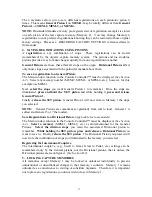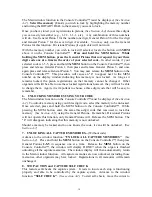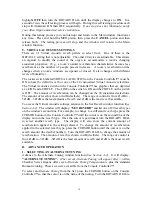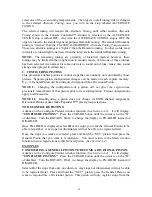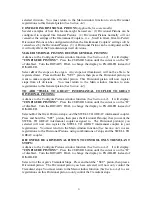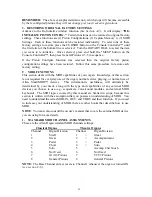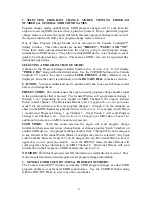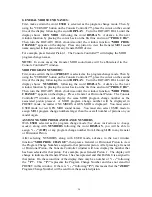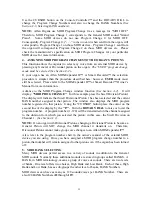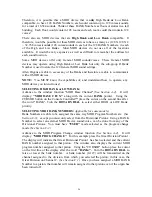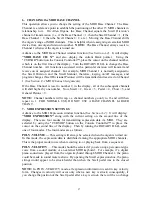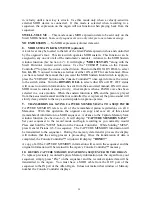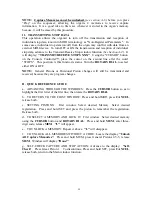
19
highlight
OFF
then turn the ROTARY DIAL until the display changes to
ON
. In a
second or two, the self testing process will begin. During this self testing procedure each
stop will illuminate ON then OFF sequentially.
If any stop does not illuminate, notify
your Allen Organ authorized service technician.
During this testing process you can interrupt and return to the Main window function at
any time. Press and hold the
SET
piston, then press the
CANCEL
piston and then
release both. The testing process will stop and the window will return to the Main
window function.
9. VIRTUAL ACOUSTICS SETTINGS
There are 21 Virtual Acoustic reverb pallets to select from. One of these is the
DEFAULT setting that is not adjustable. The other 20 styles are adjustable. This allows
an organist to modify the sound of the organ to accommodate a room’s changing
acoustical properties. (E.g., a room’s natural reverberation characteristics become less
reverberant as the number of people present increases. A room’s reverberation time
changes when a room’s windows are opened or closed. It also changes with different
levels of humidity.)
The rocker switch labeled VIRTUAL ACOUSTICS on the Console Controller™ must be
ON to hear the default reverb or one of the 20 customized Virtual Acoustic selections.
The Virtual Acoustics switch on the Console Controller™ has graphics that are depicted
as a LINE and a CIRCLE. The LINE on the switch is ON and the CIRCLE on the switch
is OFF. The amount of reverberation can be changed on the 20 customized selections.
The amount of reverb is shown in dB (decibels). The range of control is from Ø dB to -
3Ø dB. -3Ø dB is the least amount of reverb and Ø dB is the most reverb available.
To access the Virtual Acoustic settings, advance to the Set Reverb window function
(See
Section A-2)
. The window will display:
"SET REVERB"
and list one of 20 reverb types
on the window's second line. For example, to change to a different reverb type press the
CURSOR button on the Console Controller™ until the cursor is on the second line of the
display and on the reverb type. Once the cursor is positioned, turn the ROTARY DIAL
to select another reverb type. The display will also show the current amount of
reverberation applied to the setting selected. To change the amount of reverberation
applied to the selected reverb type, press the CURSOR button until the cursor is on the
reverb amount (the decibel number). Turn the ROTARY DIAL to change the amount of
reverberation. The amount of reverb is shown in dB (decibels). The range of control is
from Ø dB to -3Ø dB. -3Ø dB is the least amount of reverb and Ø dB is the most reverb
available.
B.
ADVANCED OPERATION
1. SELECTING AN ALTERNATE TUNING
Advance to the Alternate Tuning window function
(See Section A-2)
. It will display:
"ALTERNATE TUNING".
(
The current Alternate Tuning will appear after =.)
Allen
Chamber Series Organs offer seven
Alternate Tuning Temperaments,
plus the standard
Romantic tuning
.
These seven are accessible from the Console Controller™.
To select an
Alternate Tuning
from the list, press the CURSOR button on the Console
Controller™ so that the cursor is on the name of the tuning. Turn the ROTARY DIAL to













